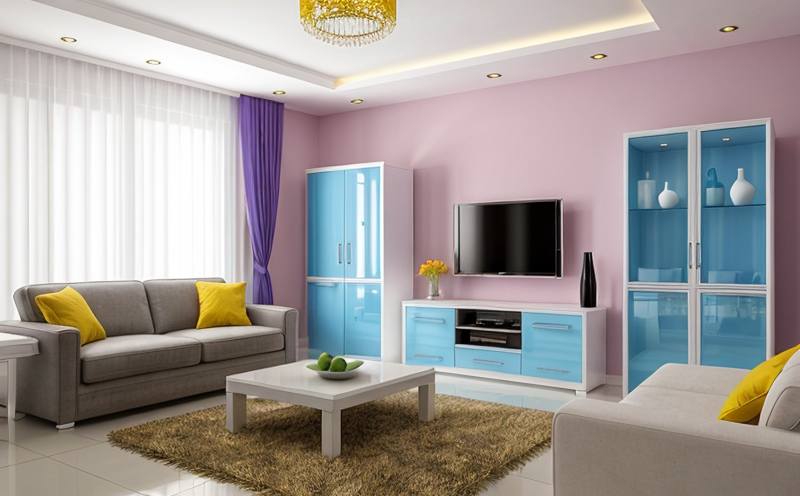NF EN 13501 Fire Classification Testing of Decorative Plastics
The NF EN 13501-1 standard establishes a common framework for assessing the fire behavior and performance of building materials, including decorative plastics. This normative document is pivotal in ensuring that products used in residential and non-residential buildings meet stringent fire safety requirements.
Decorative plastics are widely used in interior design and home decoration due to their aesthetic appeal, durability, and ease of maintenance. However, the potential for fire hazards necessitates rigorous testing to ensure compliance with fire safety regulations. NF EN 13501-1 provides a standardized procedure for evaluating the fire performance of these materials, including their combustion characteristics, smoke production, and structural integrity under fire conditions.
The test methodology outlined in this standard involves exposing specimens of decorative plastics to controlled fire environments. The performance is then evaluated based on parameters such as flame spread, heat release rate, smoke density, and residual mass after the fire has ceased. These metrics are crucial for determining the fire classification level (A1, A2, B, C) assigned to a material.
For quality managers and compliance officers, understanding NF EN 13501-1 is essential for ensuring that products meet regulatory requirements before they enter the market. R&D engineers can leverage this knowledge to innovate safer materials while maintaining aesthetic and functional standards. Procurement teams benefit from knowing that suppliers adhere to these stringent testing protocols.
The standardized approach provided by NF EN 13501-1 fosters a level playing field for manufacturers across different regions, ensuring consistent fire performance across borders. This is particularly important in the global market where building codes and standards can vary significantly between countries.
Additionally, compliance with this standard demonstrates a commitment to safety and quality, which can enhance brand reputation and customer trust. By ensuring that decorative plastics meet these stringent criteria, manufacturers and suppliers contribute to safer living environments for consumers.
The testing process is meticulously designed to simulate real-world fire scenarios while providing quantifiable data on material performance. This information is invaluable for stakeholders in the construction industry, helping them make informed decisions about materials selection and design.
Benefits
- Informed Decision-Making: Ensures that decorative plastics meet fire safety standards, providing valuable data for material selection.
- Enhanced Safety: Contributes to safer living environments by reducing the risk of fire hazards in homes and public spaces.
- Regulatory Compliance: Helps manufacturers and suppliers comply with international regulations, ensuring smooth market entry.
- Innovation Support: Encourages R&D efforts towards developing safer materials without compromising on design or functionality.
Customer Impact and Satisfaction
By offering NF EN 13501-1 fire classification testing services, we help our customers achieve compliance with international standards. This not only ensures that their products meet regulatory requirements but also enhances customer satisfaction by providing peace of mind regarding product safety.
Our comprehensive testing services cover all aspects of the standard, ensuring accurate and reliable results. This allows our clients to make informed decisions about materials selection and design, ultimately leading to higher-quality products that meet both functional and safety expectations.
We understand that compliance with international standards is crucial for businesses operating in a global market. By offering this service, we enable our customers to enter new markets confidently while maintaining their commitment to product safety and quality.
Environmental and Sustainability Contributions
Incorporating NF EN 13501-1 fire classification testing into the manufacturing process supports environmental sustainability by promoting the use of safer materials that do not contribute significantly to smoke or toxic gas emissions during a fire. This aligns with broader efforts towards reducing the environmental impact of building products.
Our testing services help manufacturers and suppliers identify sustainable alternatives that meet stringent fire safety standards, thus contributing positively to both human health and the environment. By ensuring that decorative plastics are safe and non-toxic in case of fire, we promote a healthier indoor air quality and safer living spaces.





